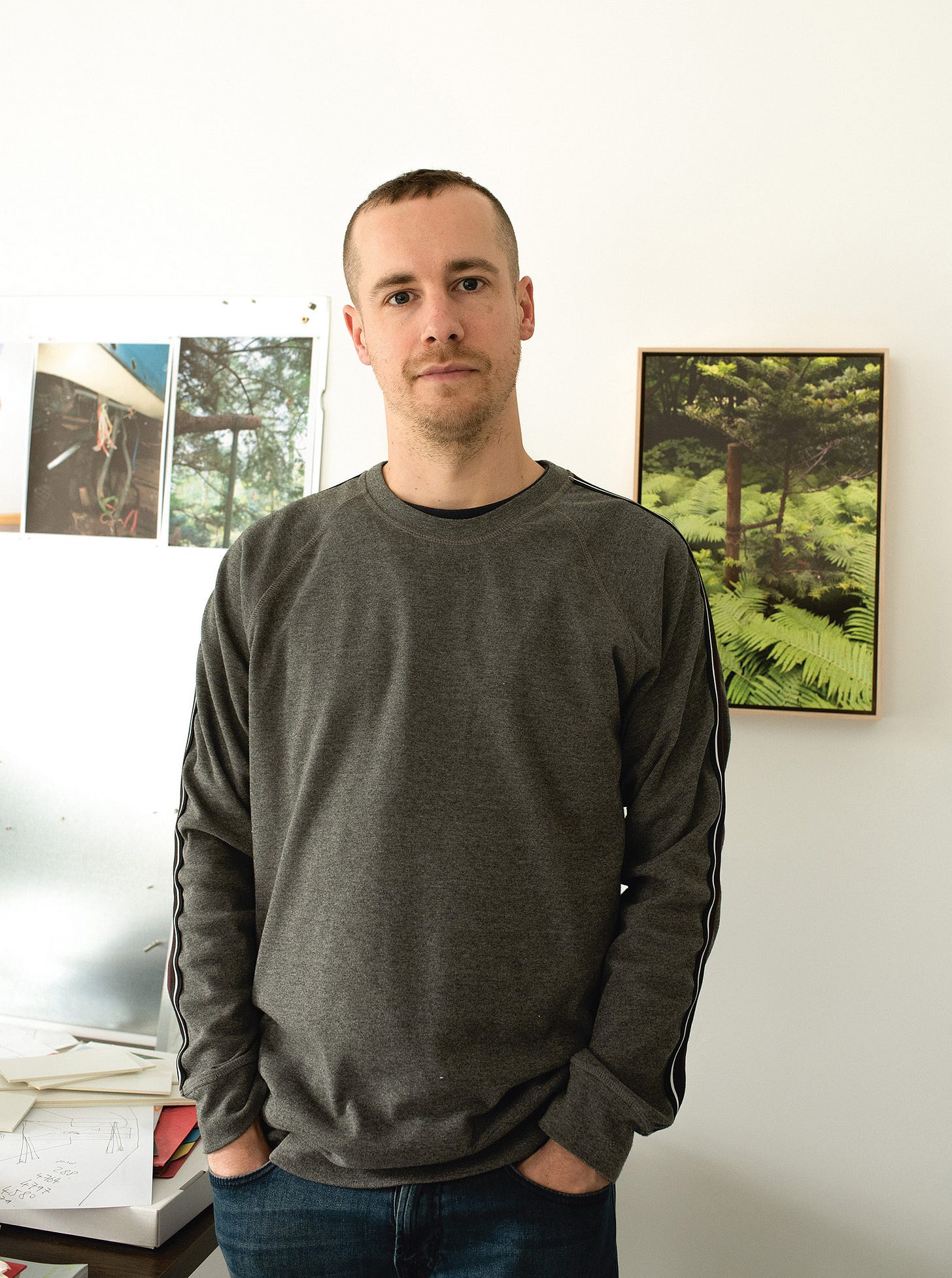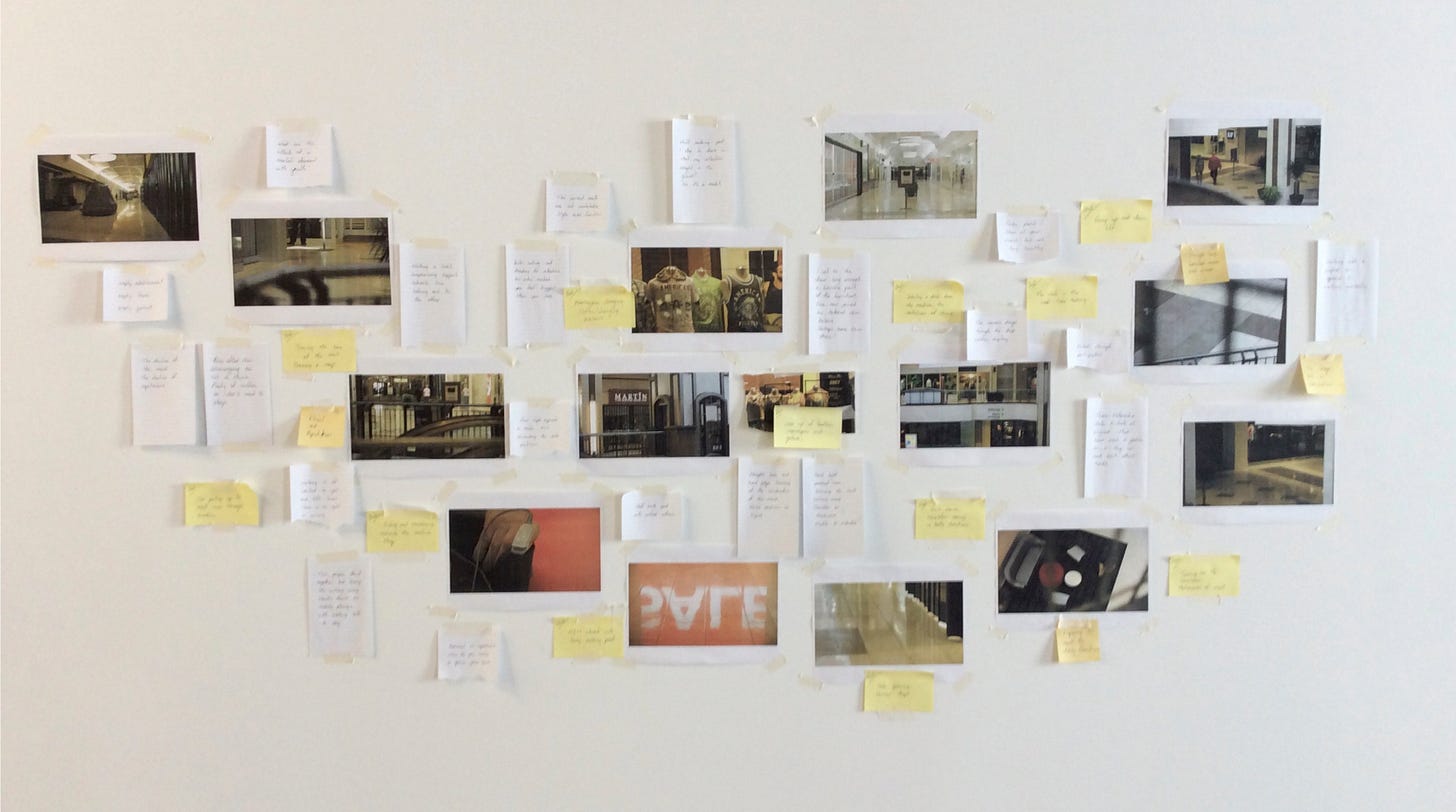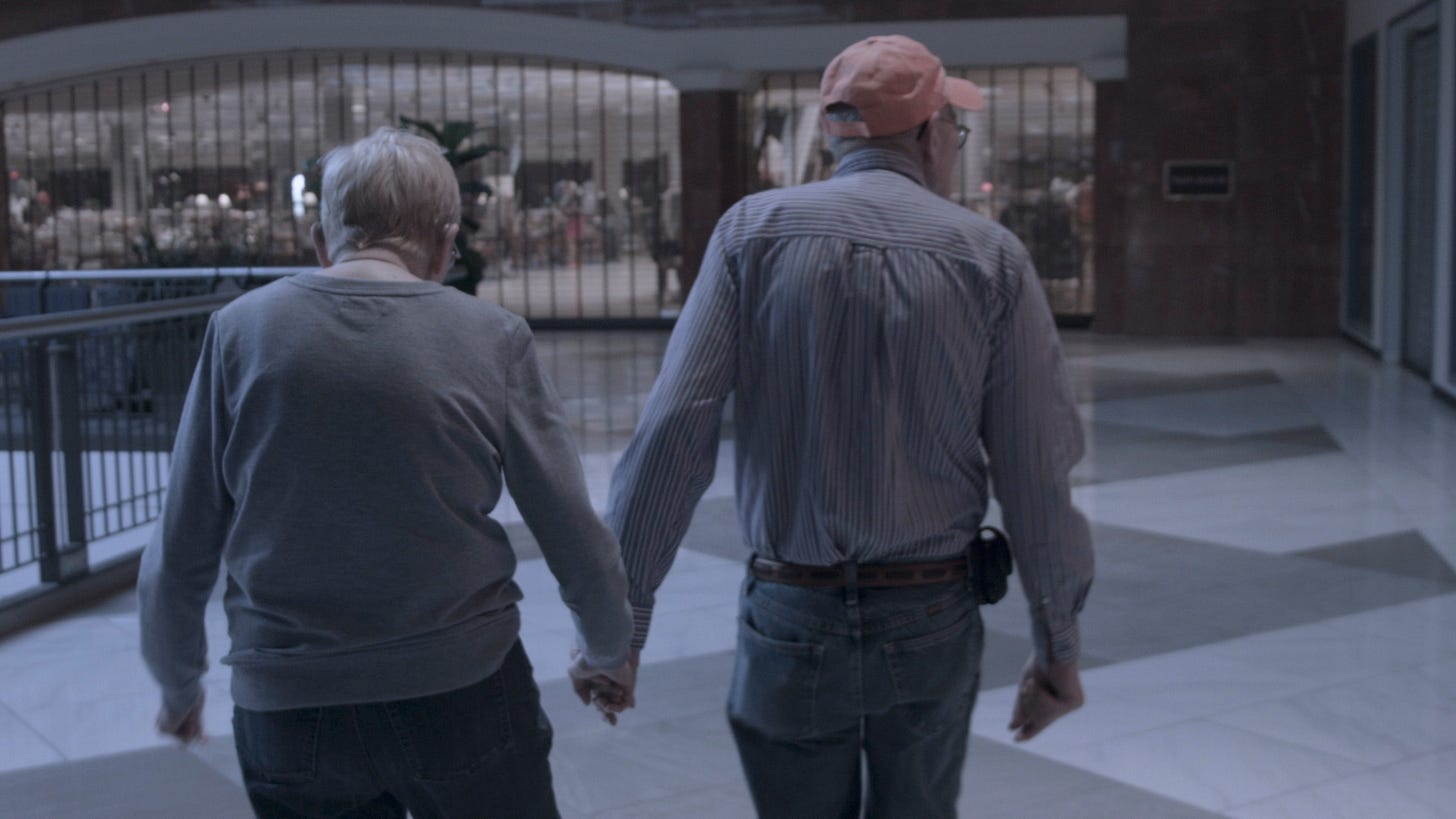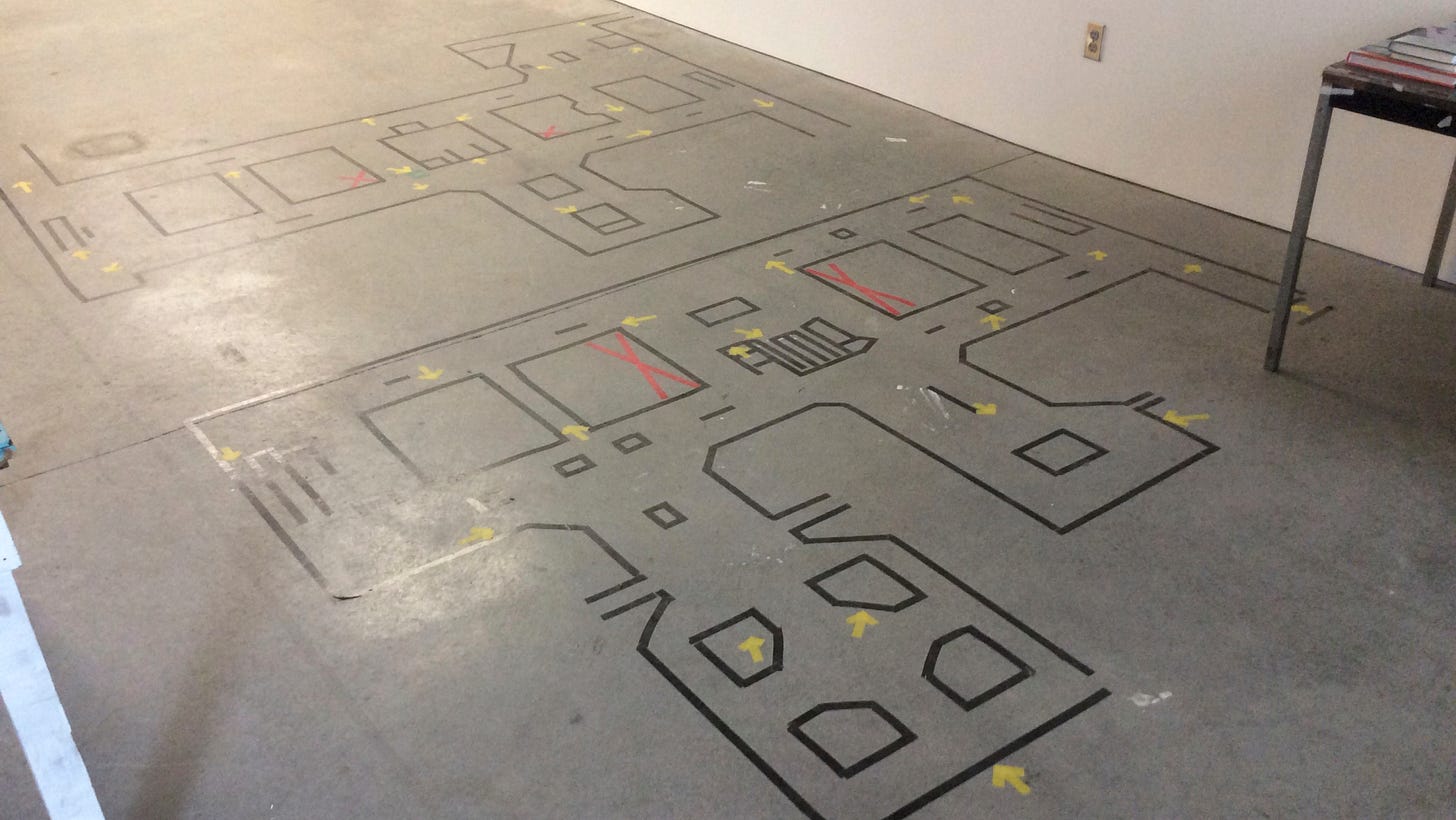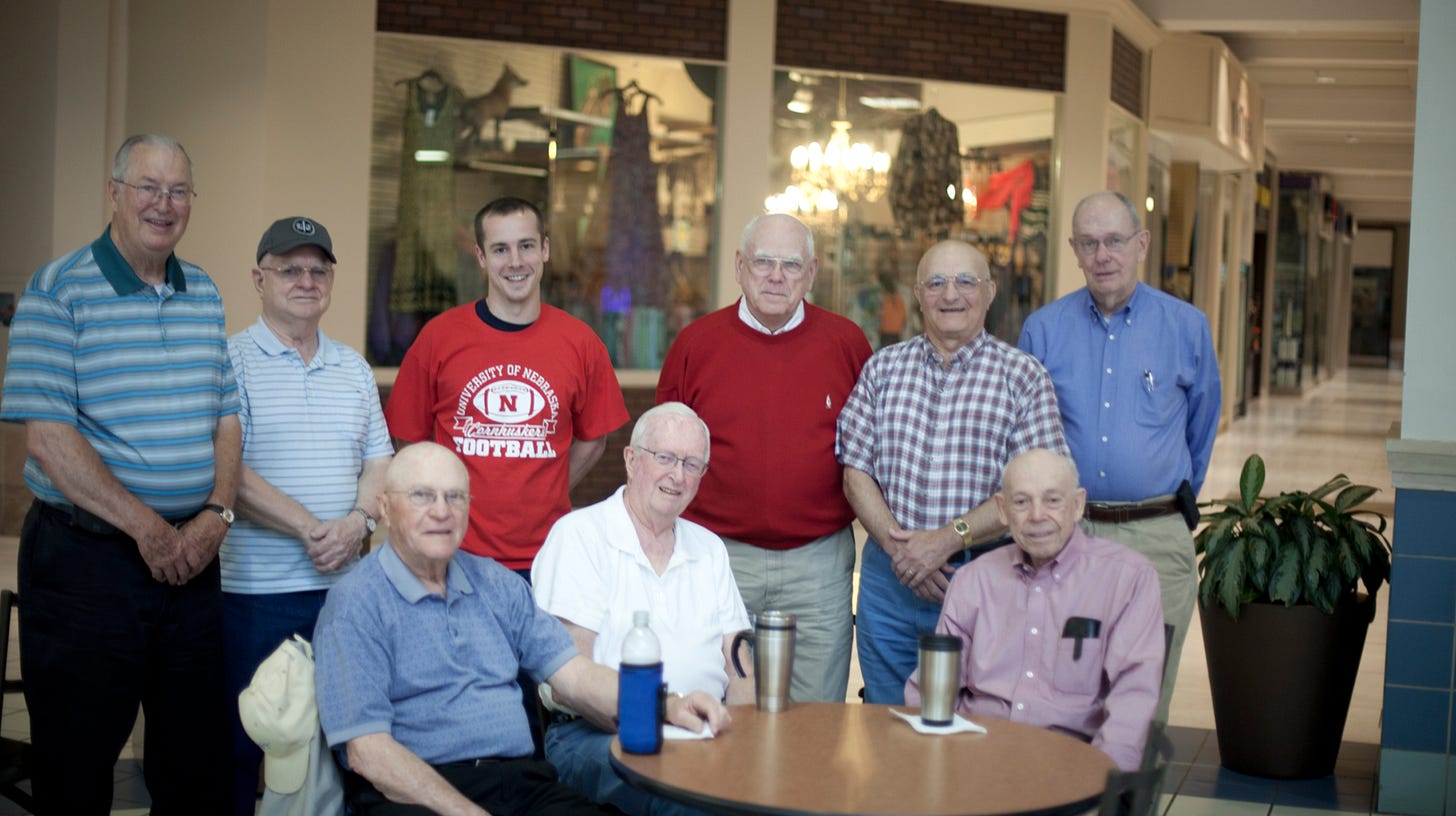Walking with Rob Crosse, visual artist
Filmmaker, Rob, talks about mall walking, the importance of listening to an idea before bringing it to life and how going for a walk helps sharpen his thinking
“Art is an opportunity not to have to answer any questions and can remain open to interpretation. Each work I’ve made feels like a chapter of an ongoing exploration.”
Rob Crosse is a British visual artist who’s been living in Berlin since 2018. His work often explores the interaction and behaviours of people in everyday social situations with a focus on amateur societies, such as a slot car racing club or a railway signalling group, and he shares their stories through photography and film.
Rob and I met more than 10 years ago and I was immediately drawn to his art, his unique way of looking at people and his immersive approach to his work. Rather than acting as an observer, documenting the minutiae of life as seen from the outside, he immerses himself in the lives and stories of the people who become the subjects in his films. He spends a considerable time researching his themes and spends long periods of time with the people he films, which enables him to witness, and share, unexpected moments.
He’s also a lover of the written word, especially poetry, and he’s a rather fine writer himself, so we’ve chatted about writing a lot over the years. So when I was thinking about the walking and writing themes I could share in The Writer’s Walk I remembered Rob’s 2015 film, Mall Walking. The practice of mall walking isn’t widely known, or done, in the UK – probably because we don’t have that many malls here – but it’s a popular activity in the US. So I asked Rob how he heard of it and why he was drawn to it, and if he could also share how he taps into his creativity.
Hey Rob, thanks for chatting with me. Let’s start by talking about your work. Your films are observations of people going about everyday activities within organised social groups and clubs. What is it about these groups that attracts you and what are you trying to show people through your photos and films?
I think in some ways all my work is about the desire to belong. I’m interested in the feeling of support found within a collective identity. It stems from my own search for an identity and sense of not belonging, which I struggled with for a long time. This sense of not belonging is a very powerful force. It can be destructive when not found and at the same time freeing if not needed, but I think it’s always there in some capacity.
I’m not sure I’m actually trying to explicitly show anything in my work. There is no specific message I want people to take away with them. Art is an opportunity not to have to answer any questions and can remain open to interpretation. Each work I’ve made feels like a chapter of an ongoing exploration. Themes of ageing, support and desire continually reoccur.
What drew you to documentary film making?
As soon as you point a camera at anything there is a level of fiction taking place. So on some levels, I don’t see what I do as documentary film making at all. When I first learnt how to use a camera I started taking photographs all the time and it became an excuse for me to visit people and places. But I realised as much as it’s a device to connect it also forms a kind of barrier. It prevented me from feeling present in a space in a way that video doesn’t. Video felt like a natural progression, from a single image to a sequence of still images. And I moved toward art because it felt like the most free space where I could experiment.
But the short answer might be, because I grew up watching lots of reality TV and nature documentaries, so perhaps what I do now is somehow a combination of the two?
Where do you get your ideas from?
I wish I knew so I could return to this place when I’m searching for inspiration. But an idea is usually formed slowly and gradually through conversations and interactions with other people. It comes from a feeling of tension. I want to feel both tenderness and threatened. The desire for these feelings is deeply engrained.
My life and work are entangled and I wouldn’t know how to distinguish between the two. For example, some of the earliest videos I ever made involved my parents. It’s a tool for me to communicate thoughts in my head that I feel compelled to express in a visual way. Perhaps this is the most direct way through which I can express them. Most of the time this seems to be through the process of making a video or film, but over the past few years I’ve started experimenting with drawings and sculpture. I want to free myself from the limitations of representing something through an image. Now I try to listen to the idea first before deciding what form it needs to take. It’s a question of trust, the older I get the better I know myself and can trust my decisions. It’s an ongoing process.
“An idea is usually formed slowly and gradually through conversations and interactions with other people. It comes from a feeling of tension. I want to feel both tenderness and threatened. The desire for these feelings is deeply engrained.”
Who are your artistic influences?
Right now, you’re more likely to find me in a cinema than in a gallery. But this changes depending on how close I am to shooting a film. I’m really into filmmakers such as Alice Diop, Nuri Bilge Ceylan and Tsai Ming-Liang. And I just watched the new film by Alice Rohrwacher who is a very impressive filmmaker.
When I’m close to filming or editing and don’t want to watch anyone else’s films then I read fiction. Writers like Claire Keegan and Abdulrazak Gurnah are very inspiring. Their words feel quietly devastating on the page. The language is so precise, almost surgical, and I think about this when I’m editing my films.
But my biggest influences of all are probably my parents. The feeling of not belonging is something they both share and I’ve inherited. This is the biggest influence across all my work.
“Writers like Claire Keegan and Abdulrazak Gurnah are very inspiring. Their words feel quietly devastating on the page. The language is so precise, almost surgical, and I think about this when I’m editing my films.”
Your film Mall Walking follows people as they take morning walks in a US mall before it opens each day. How did you hear about mall walking and what inspired you to document it?
I was with my ex partner visiting his friend in Kansas, USA, when he mentioned his friend is a mall walker. I didn’t have a clue what this meant so I asked to join one morning during our visit. We arrived bright and early at 7:30 am and the minute I stepped inside the mall I knew this was a film I had to make. People were walking in pairs and small groups making circuits around the brightly lit space whilst all shops were darkened or had their shutters drawn. In the middle of the atrium was a cafe which opened up early for mall walkers to gather after completing their laps. It was clearly an important social space as well as a site for physical exercise. The exercise aspect makes sense when you consider most American cities are built for navigating by car, and roads are often built without an adjoining pavement. If you don’t want to use a gym for exercise, or you can’t afford membership, the mall is a great alternative. It’s flat, heated if it’s cold outside and air conditioned when it’s hot, plus it's safe for people who have difficulties moving in their older age. I spent the next year looking for artist residencies in the US, including the Bemis Center of Fine Arts in Omaha, Nebraska where my application was accepted.
Omaha, like most American cities, has an active mall walking scene and I spent three months visiting Westroads mall at least twice a week to meet local participants. I got to know them quite well and met up with some outside of the mall, including attending football games and learning to square dance. Over time, I also learnt their walking rhythms and in particular what time of day they walked and in what part of the mall. There were the speed walkers at 6:30 am who would pace around quickly then leave; the grandpa club who arrived promptly at 7:30 am and walked around clutching their reusable cups ready for a coffee afterwards, and the casual walkers who arrived a bit later and kept to specific parts of the building. I even made a map on my studio floor with positions of where to place the camera and who I wanted to film. It’s actually kind of creepy when you think about it.
“I spent three months visiting Westroads mall to meet local participants. I got to know them quite well and met up with some outside of the mall, including attending football games and learning to square dance. Over time, I also learnt their walking rhythms and in particular what time of day they walked and in what part of the mall.“
I was drawn to the idea that this was a space built for consumption, but through their actions was somehow being challenged. It's a kind of occupy movement for older people. Their defiant and purposeful walks feel almost like a protest. I have a lot of respect for them and I hope that comes across in the film.
What role does walking play in your creative practice?
I’m quite a restless person with a lot of nervous energy so walking helps as a release. I take frequent breaks to walk around my studio, pacing around my desk. I’ve probably spent an equal amount of time walking around in circles as I have typing answers to your questions. But if I’m really stuck then I will leave and go for a walk in a direction I don’t normally take. Sometimes with a camera or maybe just my phone. Walking around with the intention of taking photographs helps sharpen my thinking.
How would you describe your walking style?
On any given day I could choose a different one so it’s difficult for me to answer this. There are so many variables to consider. What time of day is it? What’s the weather like? How hungry am I? So….
Happy Hiker – When I’m on holiday and happy to explore without thinking about time restraints or an end destination
Reluctant Rambler – When I’m hung over
Sunday Stroller – In spring when the plants are emerging and the trees sprout new leaves
Wild Weekender – When I’ve had a wild weekend and I’m stumbling back home in the early morning
“If I’m really stuck I go for a walk in a direction I don’t normally take. Sometimes with a camera or maybe just my phone. Walking around with the intention of taking photographs helps sharpen my thinking.”
Headphones or head in the clouds?
I never use headphones. I can’t stand listening to something on headphones and walking outside. I feel so distant and disconnected.
If you could take a walk with anyone, real or fictional, alive or gone, who would it be? And why?
I’ve always wondered if the mall walkers of Westroads mall in Omaha are still there and walking. So writing this has only made me more curious and I would love to go back there and see.
“Mall walking is a kind of occupy movement for older people. Their defiant and purposeful walks feel almost like a protest. I have a lot of respect for them and I hope that comes across in the film.
Thanks for chatting with me, Rob, and for giving us a peek behind the scenes of your creative process. I loved hearing your thoughts on the importance of listening to an idea before bringing it to life and how the precision of your favourite writers inspires your approach to film editing. And perhaps readers of The Writer’s Walk can follow your approach of taking a walk in a direction they wouldn’t normally take to see what ideas it inspires.
You can find out more about Rob’s work on his website, and watch a snippet from Mall Walking.
Happy (mall) walking until next time,
Sarah
Photo credits: Rob Crosse


